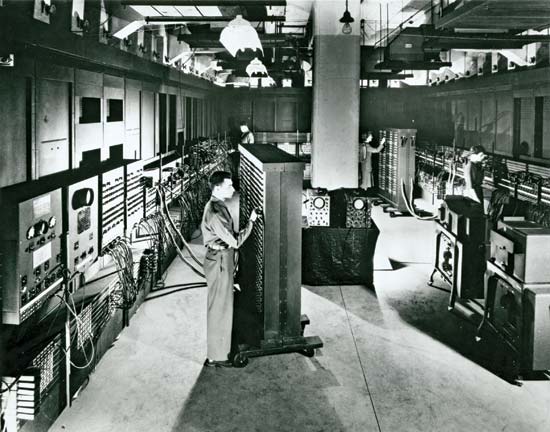 The World’s first electronic computer
The World’s first electronic computer
ENIAC (Electronic Numerical Integrator and Computer) was the first ever large scale electronic computer without mechanical parts.
The lack of mechanical parts mean that they cannot not slow down the computer. Therefore, compared to the previous electro-mechanical computers, ENIAC was much faster.
And ENIAC was HUGE! Imagine a computer that’s the size of a whole room! Furthermore, it required a whole team of scientists to manage it’s running.
Foremost, ENIAC was the brainchild of physicist John Mauchly. Mauchly put forward proposed plans for the machine In 1942. The US Army subsequently found a use for it. And so commenced the building of ENIAC. For calculating complex ballistics tables during wartime, ENIAC was perfect.
The original cost to build the computer was around 61,000 USD. That’s almost 6 million dollars in today’s money, which seems like a lot!
The new computer was finally complete by 1945. Subsequently, during the next decade, it ran more calculations than mankind had done throughout history.
Unfortunately, a lightning strike in 1955 put the World’s first computer out of action forever.
ENIAC used vacuum tubes to run and there were around 18,000 in use by the machine. A vacuum tube is like a clear glass tube which allows passage of electric currents due to the near-vacuum inside it.
Replacement of vacuum tubes was required, an average, around twice a day. This was likely to have been one of the most laborious of repairs jobs.
40 panels housed the vacuum tubes. The panels and computer parts are on display throughout the world. Therefore, from the US, to Germany and the UK, parts of ENIAC can be viewed.
Subsequently,in 1997, the six women who undertook the programming of ENIAC were inducted into the Women in Technology Hall of Fame. This was in recognition of their outstanding contributions to Science.

